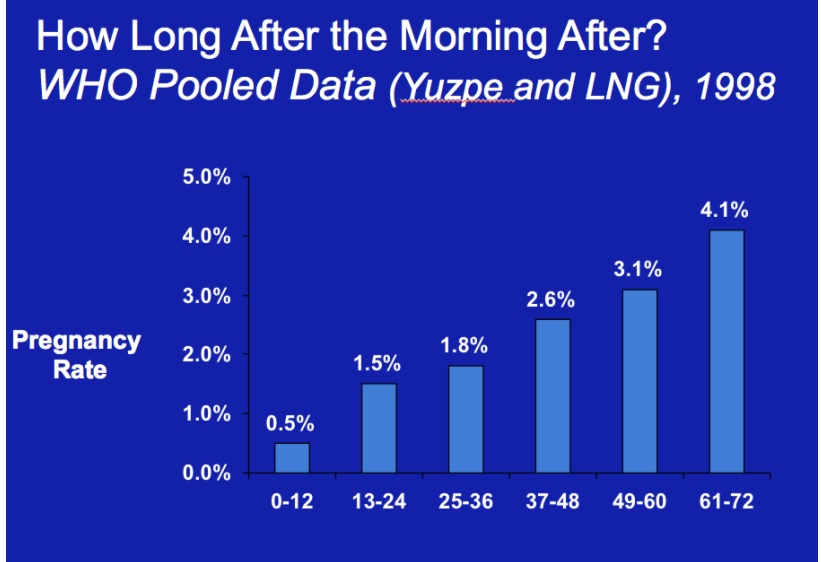We are shocked to see banners falsely claiming that “Abortion hurts women” hanging from the City’s lamp posts on Market Street in San Francisco. This statement is false, and harmful to women and girls. The display contradicts City policies and practices. We call on the Mayor to take the banners down.
1. Abortion is safe. Access to legal abortion services is essential.
Access to legal and affordable family planning health care services including abortion has been critical for expanding economic, educational and professional success and emotional satisfaction for women, the men and children in their lives and for communities as a whole. Denied abortion care can perpetuate poverty.
The best birth control can sometimes fail. About 1 in 3 U.S. women have at least one abortion.
According to the American Congress of Obstetricians and Gynecologists, abortion is one of the safest medical procedures. The risk of death from carrying a pregnancy to term is 13 times that of abortion in the U.S. (1)
Too many women routinely lost their lives from illegal abortions before 1973. Today, deaths from abortion have all but disappeared.
2. State and federal legislation increasingly aim to defund reproductive health care services and limit women’s rights.
Campaigns to defund and stigmatize abortion, and impose repressive views about sexuality, disempower and subordinate women and girls, and prevent them from choosing and using the vital reproductive health care services they think best. Their tactics include violence against abortion providers, and harassment of patients at health centers. These actions hurt women and girls.
3. San Francisco must preach what we practice.
San Francisco and California do an outstanding job of improving the accessibility and affordability of reproductive health care, including abortion care. We can be proud that San Francisco and California policies support women’s health. But our public pronouncements matter.
By approving these banners for prominent display on public property on Market St., San Francisco’s “Main Street,” the City contributes to undermining women’s personal and private medical decisions, and undermining public health.
It is further troubling that these lies are posted just outside of major commercial institutions, including See’s Candy, First Republic Bank, Wells Fargo Bank, and E-Trade, implying that these institutions believe that “Abortion Hurts Women.” We hope that they do not.
The banners violate the City’s own regulations, because they display an inaccurate date for the related event, and the event is not of interest to a significant portion of San Francisco residents. The event is mainly attended by residents bussed in from elsewhere. The City should improve and enforce these rules.
San Francisco’s elected leaders should take a stand against this statement that lies about public health. They should advocate proactively for public health policies and services that encourage women’s right to choose the best course for their own reproductive health. This stand should include support for the federal Women’s Health Protection Act.
We call on the City to Take Down the Banners.
ORGANIZATIONS: To sign on, Click “Leave Reply” below, enter Name, Title, Organization, Email. Phone
Addendum
The City has grounds and precedent for limiting and redressing harm from hateful and discriminatory speech. There are good legal examples of countermeasures the City has taken in expressions of discrimination against LGBT people and Muslims. (see below) We must pursue such a course now.
San Francisco Board of Supervisors Resolutions
San Francisco Board of Supervisors
2012 Resolution File #121172 Resolution #477-12
[Commemoration of Roe v. Wade Anniversary] Resolution commemorating the 40th anniversary of Roe v. Wade and commending the work of pro-choice advocates and service providers in the City and County of San Francisco.
http://www.sfbos.org/ftp/uploadedfiles/bdsupvrs/resolutions12/r0477-12.pdf
2009 Resolution File #090995 Resolution #348-09
Resolution urging the Federal Communications Commission (FCC) to conduct a comprehensive investigation on hate speech in the media, allowing public participation via public hearings, and to update the 1993 report on the Role of Telecommunications in Hate Crimes, including public participation via public hearings.
http://www.sfbos.org/ftp/uploadedfiles/bdsupvrs/resolutions09/r0348-09.pdf
2006 Resolution File #060356 Resolution #168-06
Resolution urging Cardinal William Levada, in his capacity as head of the Congregation for the Doctrine of the Faith at the Vatican, to withdraw his discriminatory and defamatory directive that Catholic Charities of the Archdiocese of San Francisco stop placing children in need of adoption with homosexual households.
http://www.sfbos.org/ftp/uploadedfiles/bdsupvrs/resolutions06/r0168-06.pdf
2006 Resolution File #060356 Resolution #180-06
Resolution condemning upcoming rally to be held by anti-abortion groups in front of City Hall on Friday, March 24, 2006. http://www.sfbos.org/ftp/uploadedfiles/bdsupvrs/resolutions06/r0180-06.pdf
Signers:
San Francisco Women’s Political Caucus
Trust Women/Silver Ribbon Campaign
Women in California Women’s Agenda (CAWA)
Women’s Intercultural Network (WIN)





